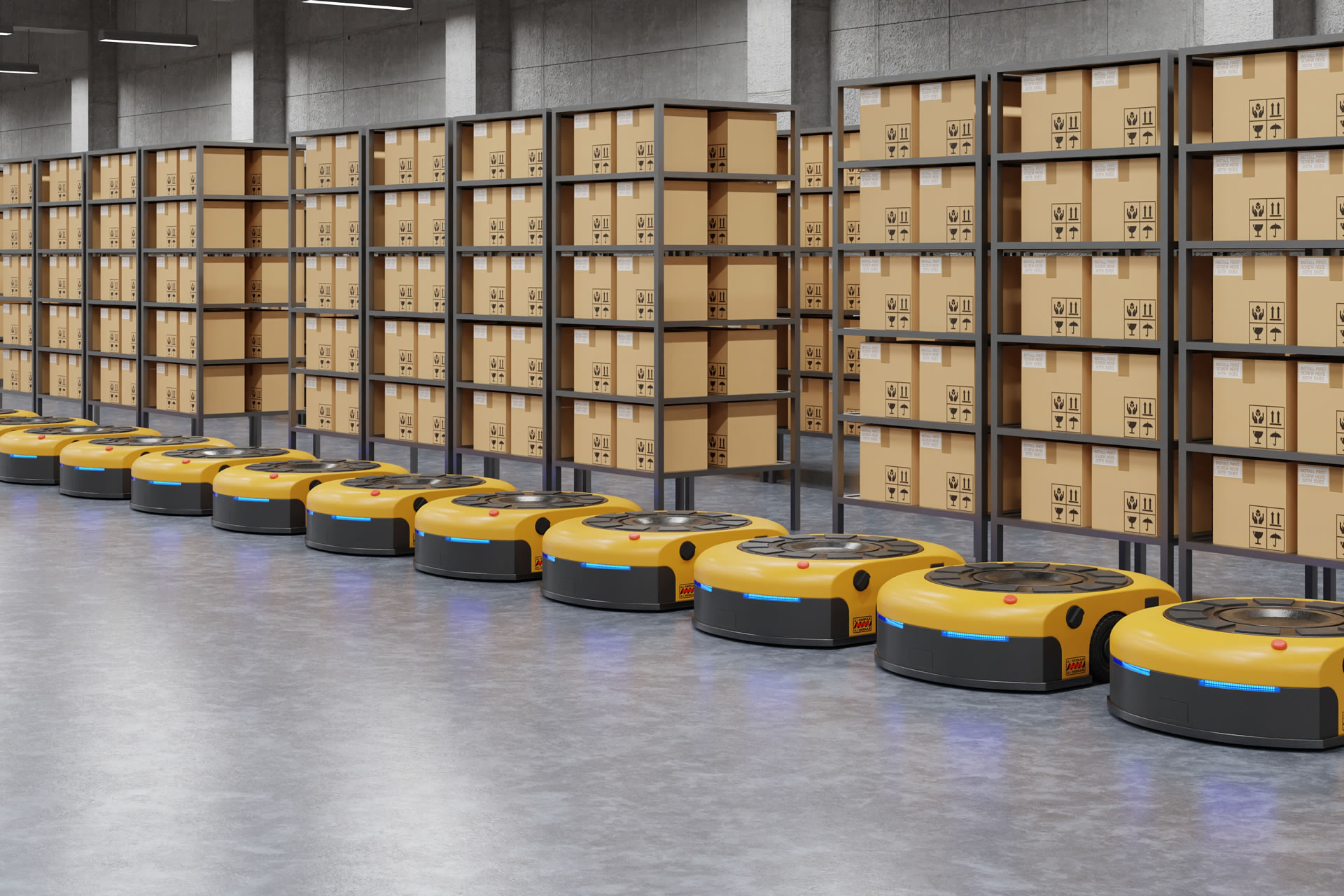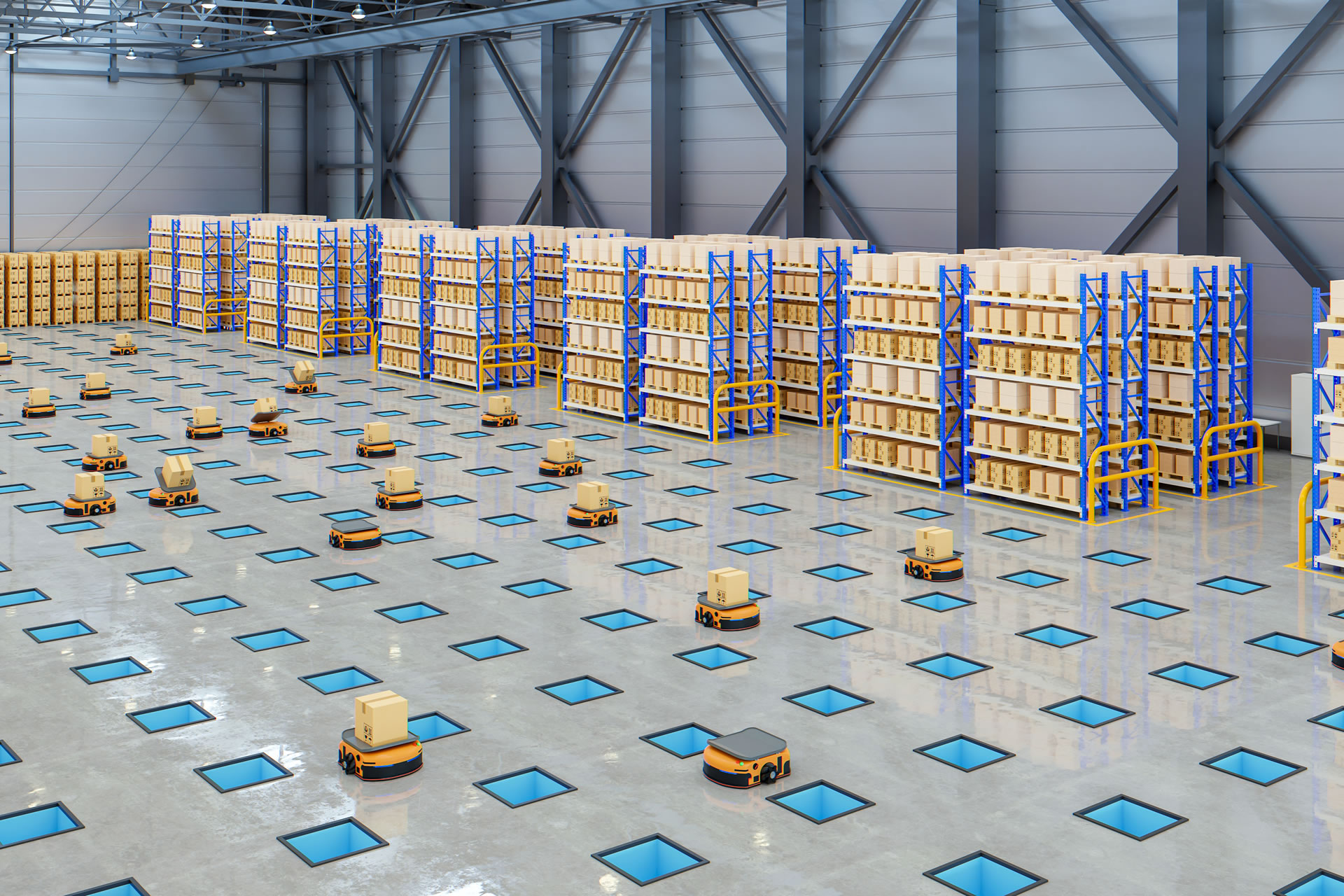
In this article, we go into great detail on automating your warehouse with WMS and provide you with a step-by-step guide for changing from manual management to automated solutions that make the most of facility resources and increase the effectiveness of logistics operations.
What is warehouse automation?
Warehouse automation is the automation of the transportation of goods in warehouses for delivery to customers. As part of an automation program, a corporation can eliminate labor-intensive operations requiring repetitive physical labor, human data input, and analysis.
For example, a warehouse worker may load heavy items onto a mobile autonomous robot. The software keeps all records up-to-date as the automaton transfers the inventory from one storage end to the shipment zone. These robots improve this task’s efficiency, speed, reliability, and accuracy.
Using software to replace labor-intensive manual tasks is usually referred to as warehouse automation, but it need not be physical or robotic. However, this illustration demonstrates how humans and robots may work together to do tedious tasks with the least amount of wear and tear.
Types of warehouse automation:
1. Physical Automation
Leverage technology to reduce staff mobility and develop more efficient processes by deploying physical automation in your warehouse. For example, we may use robots to demonstrate how physical automation works in a warehouse.
Physical automation in the warehouse offers a variety of benefits, including improved performance, greater service scalability and dependability, and enhanced warehouse capacity and efficiency. But there are benefits and drawbacks to everything. Automation of your warehouse is also acceptable.
Physical automation requires significant upfront costs, high maintenance costs, specialized equipment, and a shortage of experienced employees to manage and maintain it.
Your business must prepare in advance if it wants to successfully implement physical automation into your warehouse and reap the rewards. The technique works better in distribution centers that house sophisticated and specialized gear and warehouses with enormous storage capabilities.
2. Digital automation
By utilizing data and software, digital automation minimizes the need for human processes. Automated identification and data capture (AIDC) technologies, including mobile barcoding, are used in the warehouse during digital automation.
This streamlines manual processes and eliminates human errors. Digital process automation has many benefits, including integrating with enterprise resource planning (ERP) systems, better security; more efficient data management; reduced processing and legal risks and improved safety. AIDC technologies, including mobile barcode scanning and RFID, may promote staff happiness, enhance customer service, and reduce operational costs brought on by human error.
Implementing digital automation technologies requires a significant initial investment. These costs encompass the time and materials necessary for system deployment, employee training, and purchasing the required hardware, software, and maintenance contracts. Digital automation decreases the chance of lost or damaged data and cybersecurity threats.
Automating your warehouse with WMS: the basics
Automation is the process of identifying ways to do routine tasks that are process-oriented, time-consuming, or prone to mistakes. And as everyone involved in the warehousing industry is well aware, warehouses are full of repetitive, methodical, and error-prone procedures. These tasks include picking and stocking errors, shipping and receiving issues, handwritten documentation blunders, and many more. Warehouse operations procedures can be automated, such as:
1. Barcode labels and automated scanning
Warehouses heavily rely on paperwork to manage inventory, track the movement of specific commodities in and out of the warehouse, and identify them promptly for picking and stocking. Warehouses may save substantial labor time by automating these documentation procedures using barcode labels, rack labels, warehouse signs, and the equipment needed to read these signs and labels. Barcode labels may eliminate errors and significantly speed up documentation processes with the right software and scanning hardware.
2. Inventory Automation
In a 2014 study by Motorola titled “From Cost Center to Growth Center: Warehousing 2018,” the company found that 41% of warehouse operations continued to do cycle counts using pen and paper. This manual operation leads to inaccurate data entry and transcription, inconsistent inventory processing, and even company operations disruptions. However, automating inventory management processes is one of the most straightforward and cost-effective strategies warehouses can utilize to begin enjoying the benefits of automation.
3. Picking automation
Picking is a simple illustration of a repetitive and time-consuming operation. Modular shelf systems and warehouse robotics have made it possible to automate the picking process, which formerly needed just humans. Wherever people are involved, there is a good chance that human error will be introduced.
4. Automated vehicles
Forklifts and pallet jacks are still used in traditional warehouses. Still, this procedure is becoming more automated because of self-guiding forklifts and pallet carts, also known as automated guided vehicles (AGVs). The critical difference is that these autonomous vehicles follow digital tracks around the factory to load and unload boxes, barrels, and other containers without requiring human operators. AGVs may be added to warehouse operations as needed, gradually replacing manually driven machinery with automated equipment. Without significantly altering the structure or system, AGVs may be implemented in a existing warehouse. They may also be rented or bought, allowing warehouses to experiment before committing.
5. Back-office automation
Inventory automation typically coexists with back-office process automation. A Motorola study found that 32% of warehouses lacked real-time data access in their warehouse management systems (WMS), which led to inaccurate inventory counts and other problems that might have a minor to a significant impact on the supply chain. Access to exact, up-to-date data is crucial in the modern, time-sensitive world of warehousing.
Types of warehouse automation technology:
1. Pick-to-Light and Put-to-Light Systems
These devices provide warehouse pickers instructions on how to pick up and arrange certain items utilizing mobile barcode scanning. Additionally, these technologies may significantly reduce walking and searching times and human error in high-volume warehouses.
2. Automatic Guided Vehicles (AGVs)
Very little computing power is needed onboard for the system. The best places for AGVs to be used are simple, large warehouses. AGVs are incredibly inefficient in complex warehouses with many employees and limited space.

3. Automated Storage and Retrieval Systems (AS/RS)
Both components of the GTP fulfillment technology comprise robotic vehicles, compact loaders, and tote shuttles for transporting and carrying items. Large-capacity warehouses with storage issues commonly use these technologies.
4. Autonomous Mobile Robots (AMRs)
The system is more flexible than the other systems mentioned above. You may use it to map out effective routes through the warehouse. Additionally, they use cutting-edge laser guidance to detect obstructions, making navigation safe.
5. Voice Picking and Tasking
Instructions on how to perform various activities are given to warehouse workers using speech recognition technology. Additionally, this method eliminates the need for portable equipment like RF scanners, freeing up staff to work more safely and productively.
6. Automated Sortation Systems
Businesses use automated sorting systems to select, pack, and ship items when fulfilling orders.
7. Goods-to-Person (GTP)
One of the most popular warehouse automation methods is reducing traffic and increasing productivity. Conveyors, vertical lift systems, and carousels are other technologies for automating warehouses. Warehouse picking might be sped up by two to three times if your business implements the GTP system correctly.
How to automate your warehouse?
Automating your warehouse with WMS requires a project plan. You must specify goals and deliverables, include stakeholders, create a project schedule, and analyze and evaluate risks.
First, establish a support group, then choose a project manager (s). They will settle on a project plan and establish a timeline and calendar of deliverables. Create implementation support strategies based on suggestions from all managerial levels after that. Select the warehouse automation that most fulfills the goals of your business, customer demand; team feedback; time restraints; and resources available. It would help if you researched the various automation options and requested demos. Mobile barcode scanning has different needs compared to other implementations, such as an AS/RS inventory management system.
Why should you be Automating your warehouse with WMS?
1. Reduced cost
Initiatives to renovate warehouses might be expensive, but they typically pay off quickly. The astonishingly rapid ROI results from several other cost-saving opportunities provided by automation, including lowered labor costs, enhanced performance, optimized handling, and storage expenses, decreased inventory errors, removed dangers of product maltreatment and loss, etc.
2. Increased customer satisfaction
One of the main objectives of large retailers and logistics companies, aiming to increase operational performance and better fulfill expanding customer needs, is the development of fully automated warehouse systems. Modern smart warehouses offer services like same-day delivery, have significantly higher ceilings, and are regularly restocked.
3. Better safety
Consider creating warehouse automation technologies to increase employee and product safety. Carrying heavy pallets and high racks, working in busy places, and even handling hazardous goods are high-risk everyday activities in warehouse jobs (e.g., chemicals).
Request a Demo
Need more information?
Solutions






![image001[25]](https://www.royal4.com/wp-content/uploads/2023/11/image00125.png)